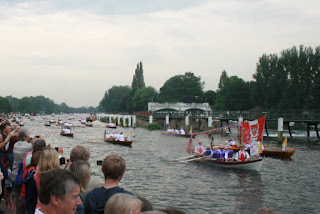A few weeks ago I purchased a British Waterways Handbook dating from, I believe, 1952. The booklet was published by the the Docks & Inland Waterways Executive who took over responsibility for the waterways of Britain when transport was nationalised in 1947. It is therefore a booklet from the early days of British Waterways and around 50 years old.
The book is light on detail and simply produced, although for its day it has quite a few illustrations. The emphasis is on commercial carrying and modernity. The broader canals, with plenty of commercial traffic, get prominence and much is made of the links between the inland waterways system and the ports. This is entirely natural given the period and the difficult times Britain was going through immediately post World War II.
Having just navigated the River Trent from Sawley down to Keadby I was taken by the images of commercial carrying on the Trent and the emphasis on its connections to the Humber Ports.
The book is split into sections. It starts with a general section describing the background to the British Transport Commission, the Docks and Inland Waterways Executive, and the carrying going on around 1950. There are then several sections following the divisional structure of British Waterways. There is also a short section covering Scotland.
There is a single page at the back of the handbook covering Pleasure Boating. This is illustrated with a single plate from Eric de Mare's 1950 book
The Canals of England which shows a canoe and de Mare's own converted army bridge pontoon meeting on the Shropshire Union near the Welsh border (details from the original caption).
Converted Pontoon meets canoe on the Shropshire Union
(c 1950)
This picture above got me looking back to the familiar handy map, close to the beginning of the book, to search for the Llangollen Canal, as it is now known. I knew that it had featured heavily in the de Mare book and I was wondering how the DIWE had treated it. To my amazement the canal was not there!
At first I wondered if the Llangollen was missing because the DIWE had only mapped modern "commercial" waterways, but this was not the case since canals such as the Chesterfield, Caldon and Kennet & Avon were shown. They even showed "Independent Canals" such as the Bridgewater and "Independent Rivers" such as the Nene and Avon. Also, the canals listed in the North Western Division include the Shropshire Union but no mention was made of any canal to Llangollen. It appeared therefore to be a deliberate omission.
1950s Map of Inland Waterways (without the Llangollen)
The answer as to why the Llangollen was omitted is almost certainly tied up with the aim of the DIWE at the time to concentrate on commercial carrying in line with its role as nationalised industry. There was a struggle going on to save the inland waterways as a national resource, led by the then newly-formed Inland Waterways Association, but putting it simply, the DIWE wanted rid of the Llangollen Canal because it was a financial burden. Their only interest in the canal was as a water supply feeder and that was proving difficult.
However, times were changing. In 1948 Tom Rolt & Robert Aickman of the IWA had met with the DIWE and raised the issue of the Llangollen which was scheduled for closure and in a poor state of repair. By the following year the Grundys on Heron and Tom Rolt on Cressy had finally reached Llangollen by boat. In June 1952 the North-Western Branch of the IWA had even held a rally at Llangollen. So at the time the handbook was published the prospects for the Llangollen were definitely improving but the DIWE were still trying to get rid of its responsibility for the canal by asking local authorities to take over the canal and use it for water abstraction. By1957 things were very different and the Llangollen Canal reappeared on "the BW map", they produced their first
cruising booklet for pleasure boaters - for the Llangollen Canal!
For a fascinating insight into how the Llangollen Canal was saved I thoroughly recommend the article by
Peter Brown. Looking back it appears amazing that this most popular cruising canal was considered a liability and planned for closure - what a wonderful thing is hindsight.



















